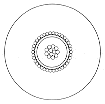If you spend a lot of money on audio equipment, it is helpful to have a basic understanding of specifications and how those might affect successful partnering of equipment. Examples include how the relationship between amplifier power and speaker sensitivity affects dynamic performance, as well as how input/output impedances, speaker phase angles, and impedance fluctuations with frequency, can affect the successful partnering between equipment.
I do not agree with the statement that specifications are "pretty much useless unless independently measured". I cannot remember any cases I have seen with wholesale deviations between published specifications and published measurements by a third party, such as Stereophile. I would not purchase expensive audio gear without reviewing the specifications as due diligence to verify the gear is likely to serve the intended purpose.


